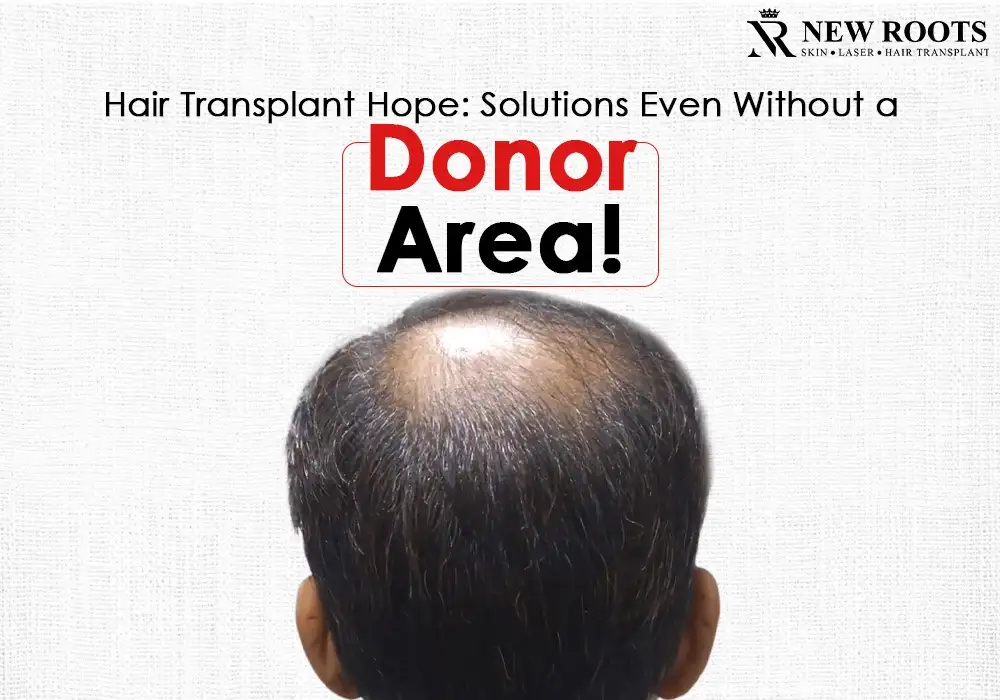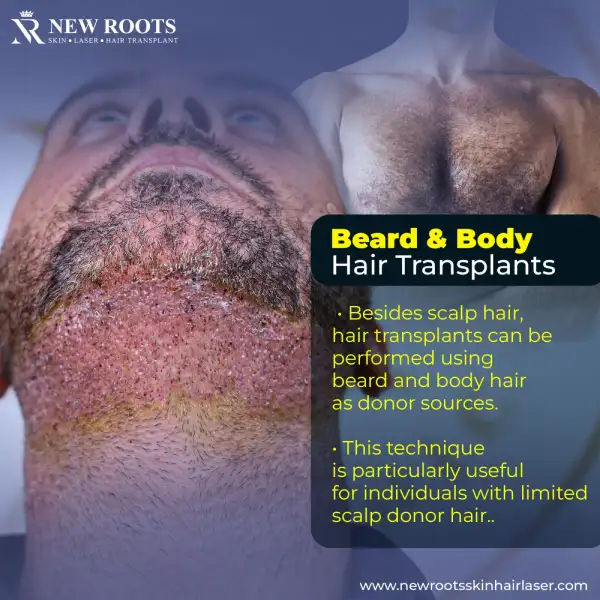Transform Your Look: Hair Transplant Without Donor Area:
Hair loss is a major menace affecting a large population across the world, and the emerging idea of hair transplanting without a donor site is breaking the traditional approaches to the problem of baldness in the field of hair restoration.
It provides new possibilities for those patients who face such issues as the problem of a limited number of hairs from the donor area or its deterioration. Now it is time to consider the main aspects of this breakthrough in hair transplantation.
Table of Contents:
- Introduction
- Hair Transplant Without Donor Area: A Revolution in the Making
- Knowing the Conventional Techniques of Hair Transplant
- The Advent of Hair Transplant Without Donor Area
- Steps in Hair Transplant Without Donor Area
- The Technical Processes Involved in Hair Transplant Without Donor Area Step-by-Step
- Exploring the Latest Advancements
- Advancements in Implantation Techniques
- Frequently Asked Questions (FAQs)
Introduction:
Within the field of hair transplant, huge developmental changes are taking place to improve patient results and minimize invasive surgeries. Out of such innovations, one can name hair transplant surgery without using the donor area.
This innovative concept of the hair transplant gets rid of a specific donor site behavior which actually contributes to the enhancement of the hair transplant procedure to cater for many people.
Hair Transplant Without Donor Area: A Revolution in the Making:
Knowing the Conventional Techniques of Hair Transplant:
The first issue that can be mentioned as being associated with the use of the proposed method is the donor area, which has a limited stock of hairs. Sometimes, because of the increase in the number of grafts needed for a successful transplantation session, the donor area may be harvested completely and this results in limited or no further hair restoration.
This is even more so if one has severe baldness or if they need more than one session for a hair transplant.
The Advent of Hair Transplant Without Donor Area:
Thus, an important advance in the evolution of hair transplantation arose under the name of hair transplantation without a donor area.
Thus, “hair transplant without donor area” solves these problems by presenting a new approach to performing hair transplant surgeries without using a conventional donor region. Various prospects could be achieved through this unique method, which may help those patients who are not qualified for hair transplantation because of the lack of donor hair.
Steps in Hair Transplant Without Donor Area:
Extraction of Hair Follicle Stem Cells:
The first of the procedures entails the collection of hair follicles that consist of stem cells that help in the growth and continuity of hair. These stem cells can be taken from various regions of the body such as the scalp, and body hair, or even through a small biopsy on the skin.
Cultivation and Expansion:
The stem cells are then carefully isolated and propagated in a specially designed bio incubator with the help of specialist laboratory culture techniques. This procedure enables an increase in the number of stem cells by making many clones, which in essence translates to potential donor hair follicles.
Implantation:
When the stem cells have sufficiently multiplied, they are grafted back into the areas needing hair replacement surgery. This is usually achieved through the utilization of various technologies which include unique implants as well as robotics to place new hair follicle/s appropriately.
Technical Processes Involved Hair Transplant Without Donor Area:
Bioengineered Hair Fibers:
Bio-engineered hair is synthetic hair that looks and feels like natural hair. These fibers are made from biocompatible materials and this makes it safe for use in implantation into the human Scalp.
The process involves in Hair Transplant Without Donor Area:
Production of Hair Fibers:
Hair fibers are prepared out of biopolymers with the help of sophisticated technologies to ensure their similarity with the patient’s hair color and thickness.
Sterilization:
These synthetic fibers are well-washed and sterilized to reduce any possibility of developing an infection after implantation.
Implantation:
With the help of these specialized instruments these fibers are implanted in the scalp at set angles and a rate whereby they do not look artificial.
Direct Hair Implantation (DHI):
DHI is always used along with bio-surgical hair fibers and has received widespread use worldwide. DHI employs a pen-like tool to implant hair fibers directly into the scalp without creating small niches on the client’s scalp first. This method offers several benefits: This method offers several benefits:
Precision:
Due to the features of the DHI tool, it is possible to place hair fibers in precise locations to achieve a natural look of growth.
Minimal Invasiveness:
Since there is no requirement for ready-made recipient sites, there are less invasive ways and overall healing time also decreases.
Immediate Results:
Surgery has the main advantage of allowing the patient to observe positive changes in the hair density and their condition right after the surgery.
The Technical Processes Involved in Hair Transplant Without Donor Area step by step :
Step 1: As mentioned before, the first step and potentially the most invasive process in stem cell therapy is stem cell extraction.
The first process is followed by extracting hair follicle stem cells from a piece of skin. These stem cells can be harvested from the patient’s scalp, body hair, or a skin sample. The extraction generally takes a surgical form that is inclusive of minimally invasive methods to avoid aggravating the patient’s condition in the process or afterward.
Step 2: Cultivation of stem cells and how they can be expanded.
Once hair follicle stem cells have been harvested, they are taken to a specific laboratory center. Here, language refers to the stage at which stem cells are cultured and increased in an excellent manner. Following this, stem cells must be cultivated and replicated using innovative cell culture procedures; in other words, a larger number of potential donor hair follicles is produced.
Step 3: Implantation
The hair transplant procedure without a donor area includes the following action steps: The last step is the implantation of the cultivated and expanded hair follicles into the menu hair baldness area of the head. This process is commonly accomplished through the employment of designated surgical procedures, including robotic amplified implantation apparatuses or sophisticated hand-held implantation tools.
Exploring the Latest Advancements:
The advancement in the field of hair transplants without donors is relatively recent, and scientists and doctors are always innovative in this field. Let’s explore some of the latest advancements in this groundbreaking technology: Let’s explore some of the latest advancements in this groundbreaking technology:
Advanced Methodologies of Stem Cell Culture:
Advancements in Implantation Techniques:
It is also noteworthy that the implantation process is being gradually fixed. Robotic processes, imaging systems used in surgeries, and devices for proper implantation of hair grafts enhance hair transplantation’s speed, accuracy, and success rates without involving donor area procedures.
Contemplation of Other Stem Cell Sources:
Most commonly, hair follicle stem cells are harvested from the scalp, but other regions of the body have also been of interest as have other regions of the skin or adipose tissue, or even iPSCs. These other resources could provide more possibilities for patients and extend the directions of hair transplants without the donor area.
Hair Transplant Future without Donor Site:
Thus, the future of this novel hair transplant technique without donor areas looks quite bright as further developments remain innovative. Therefore, patients can expect even more natural and reasonable solutions to hair restoration, free from limitations of the donor area, individual optimization, and range of interventions.
The continuous cooperation of doctors, scientists, and technology developers will contribute to more improvements and discoveries in this sphere. The technology will further develop and grow, so hair transplants without donor areas can help countless people who have lost their confidence and self-esteem because of baldness and hair loss.
Frequently Asked Questions (FAQs):





